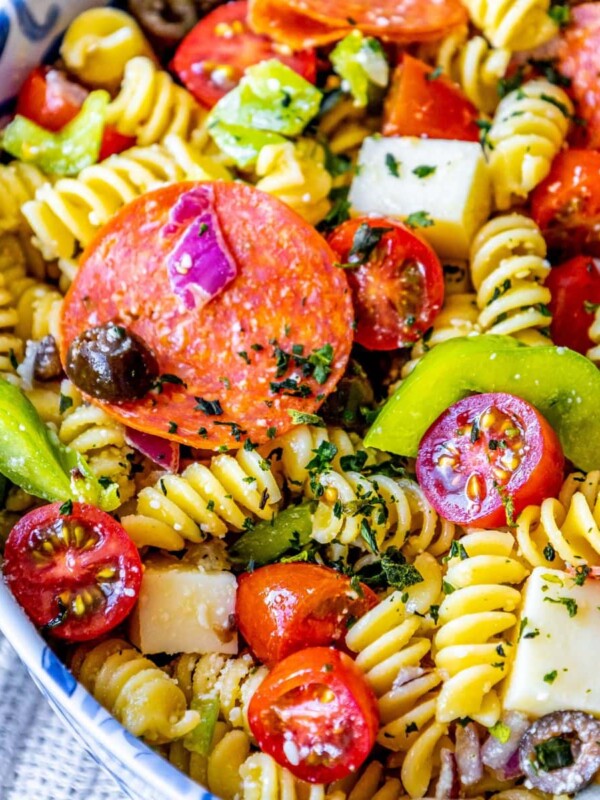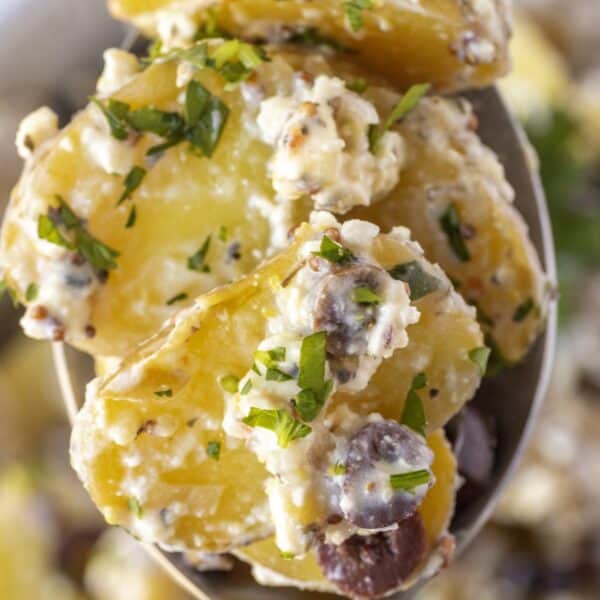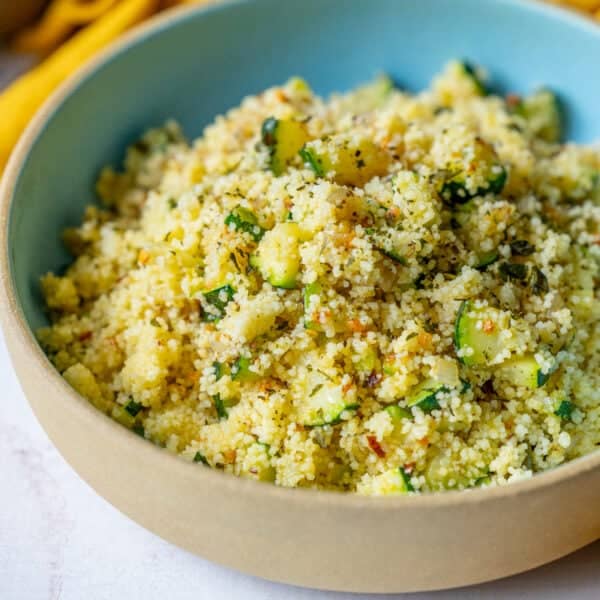This post contains affiliate links. Please read our disclosure policy.
Roasted Pork Loin and Pears Recipe – delicious tender juicy roasted pork baked alongside pears, shallots, and fresh herbs for a one pot dinner even picky eaters love!

Don’t want all the extras in a recipe post? We provide a skip to recipe button in the top left corner, as well as a clickable table of contents, just below, to help make this page easier to navigate.
At Sweet C’s, I add lots of tips in all of my recipes – because I am a home cook without any formal training, and I find I am more confident making dishes when I understand why it works, and what each ingredient means to the flavor of a recipe. My goal is for even the most beginner home cook to feel empowered in the kitchen.
Table of contents

Baked Pork with Pears
This dish is a spinoff of the classic pork and applesauce dish we all grew up with – but with soft, slow roasted pears that give a rich, sweet, and buttery flavor that pairs perfectly with pork!
We’re loading up this roasted pork loin with roasted shallot, rosemary, and other fresh herb flavor that is irresistible – this dinner is truly a one pot dinner that is simple to make, but tastes like it took hours!
If you love our pork loin and potatoes recipe, or our famous garlic butter pork tenderloin – you’re going to LOVE this recipe. Pork is a light, leaner meat that goes wonderfully with sweeter side dishes, making roasted pears a lovely addition alongside pork loin, especially with lots of shallots, rosemary, and other savory herbs.
This dinner is loaded with flavor without being much work – slice the pears and season your pork, add everything to a roasting pan – and cook, while your house fills up with the most amazing smell.
- Truly a one-pot dinner – cook your pork and the roasted pear side dish all in one roasting pan!
- One pan means less prep, and less cleanup!
- Low sugar – while this dish isn’t technically low-carb since we’re using fruit, it is naturally sweet, without the addition of any additional sugars. We’re just using fresh pears for their delicious sweet flavor to pair perfectly with the pork.
- Easy to feed a crowd – this dinner is great for family dinner, but can be great for a dinner party, too!
- Economical – pork loin is a great choice for feeding a group!
If you love this recipe and want to try more of our pork favorites, you can find our entire pork recipe archives here.

How to Make Roasted Pork Loin and Pears
To make this recipe, we will need the following ingredients:
- Italian dressing. Italian dressing is optional for this recipe, but our pick for a perfect easy marinade. I like to toss pork loin in a large bowl or dish that is large enough to hold a pork loin, and drizzle a bottle of cheap Italian dressing over it, then cover it with plastic wrap and refrigerate for 30 minutes, up to overnight. You can also just toss it all in a plastic bag! Italian dressing contains oil and vinegar, as well as plenty of herbs and spices, to tenderize your pork, and help infuse it with fat as well as flavor, so when it cooks it will stay juicy, moist, and flavorful.
- Pork loin. Pork loin is a large, tender, cut of pork that runs along either side of the backbone of the pig, beginning just below the shoulder and continuing down to the leg. It is a wide, flat, rectangular cut of pork that doesn’t contain much fat and dries out when cooked at high heat – but is phenomenal when cooked quickly or at a low temperature. Pork loin is often confused with pork tenderloin – a long, thin, much smaller strip cut from underneath the backbone which takes even less time to cook.
- Butter. Butter adds fat and flavor to our pork, crucial for browning the meat before roasting, as well as acting as a basting liquid as it bakes.
- Sea salt and fresh cracked pepper. Salt and pepper are crucial flavor elements of most savory dishes – we prefer fresh cracked pepper and a high quality Celtic or kosher salt.
- Shallot. Shallot is a mild allium that is similar to onion, with a less pungent, milder flavor that is a lot like a cross between garlic and onion. It is lightly sweet when caramelized, and has a soft purple color. The enzymes in shallots also help to break down pork and tenderize it as it roasts, working to not only enhance the flavor of your meat, but the texture as well.
- Garlic. Garlic has a has a unique, pungent flavor that borders on spicy when raw and nutty and slightly sweet when cooked – it enhances the addictive and umami-friendly flavors in roasted pork.
- Pears. Pears are less sweet than apples – a traditional accompaniment to pork – but pears take on a bit of an apple-like flavor when roasted that is perfect alongside pork to highlight the light, tender white meat of pork loin without overpowering it. Pears are also great to roast with meat because they don’t brown like apples when cut, and retain their shape well, even in high heat.
- Fresh rosemary, thyme, and parsley. Adding fresh herbs – whatever you have on hand or prefer – gives this recipe a bright, flavorful kick, as well as a gorgeous pop of green. I like to roast pork with herbs in the pan, and then remove the browned herbs when it is done, and replace them with fresh, vibrant green herbs when serving for a pop of color. Remember – we eat first with our eyes, and a bit of green on the plate helps entice!


Once we’ve gathered ingredients, we will use the following method:
- Prep. Preheat oven, brown pork in a pan with butter, and slice pears in half and remove cores. Arrange browned pork, pears, shallots, garlic, and herbs on a baking sheet or in a roasting pan.
- Bake. Bake until pork has reached 140 degrees internal temperature. This will likely be about 30 minutes – but go off your temperature, not the time.
- Rest. While your pork rests after baking, you can gather juices that formed in the bottom of the pan and boil them in a small pot on the stove with some butter if you’d like to make a quick gravy to serve with your pork. Serve sliced with pears, shallots, garlic, and fresh chopped parsley or herbs.
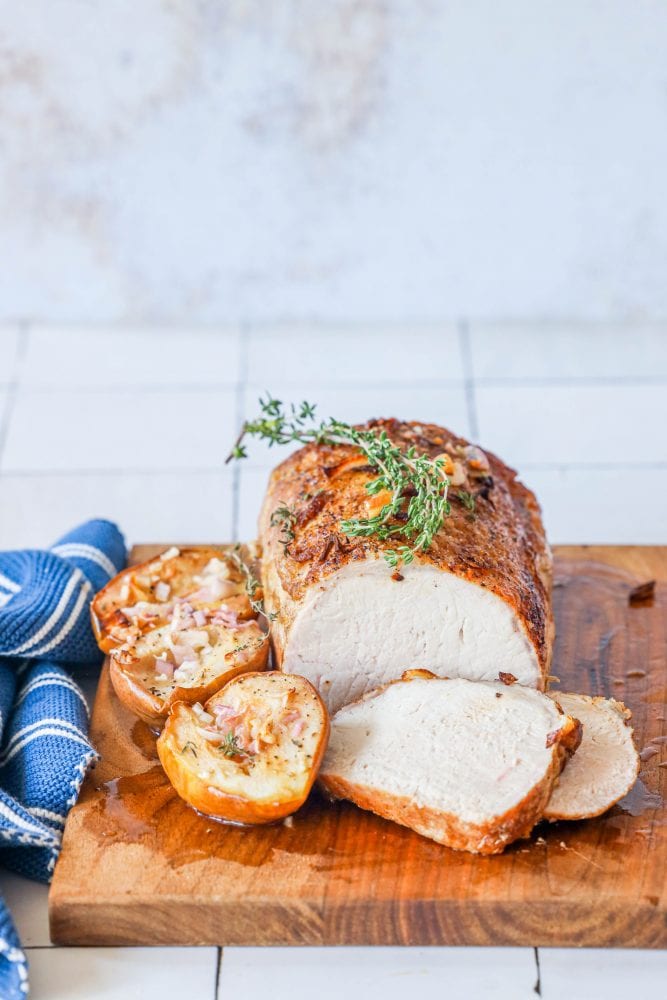
Tips and Tricks To Perfect Roasted Pork Loin and Pears
Marinate pork. Marinating or brining pork loin before cooking will always help to soften the pork loin and keep it from drying out. I love using a bottle of simple Italian Dressing or a cup of olive oil with some lemon juice, salt, and pepper for an easy overnight pork loin marinade.
Don’t overcook. Pork loin dries out very quickly when overcooked. Pork is properly cooked at 145 degrees, overcooking will dry out pork.
Pull pork from oven at 140 degrees. I often pull my pork loin at 140 degrees and tent it with foil to continue carryover cooking as it rests for about 10 minutes before serving.
Let pork rest before carving. You should let pork rest for at least 10 minutes, up to 15 minutes before serving while you finish up some side dishes, too! Resting meat allows the juices to settle and reabsorb, so they don’t all run off and dry out your meat.
Cooked pork is still pink! You’re looking for slightly pink in the middle, as food safety rules have changed and pork no longer needs to be cooked all the way to fully opaque and white in the middle.
Are pork tenderloin and pork loin the same? I get a lot of questions on this recipe on whether to use pork tenderloin or pork tenderlion. The two cuts of pork are from similar areas (off the back of the pig), and are both leaner and respond to the same cooking methods, but pork tenderloin is much longer and skinnier than a pork loin. Pork loins tend to be much fatter, much heavier, and over 3 lbs – while a pork tenderloin will be longer, skinnier, and around 1-2 pounds.
Can I use a pork tenderloin? For this recipe, I am calling for a Pork Loin – but a pork tenderloin will also work! To make this baked pork loin recipe with a smaller, thinner pork tenderloin, continue with the recipe exactly as called for below, but plan on for 10-30 minutes less cooking time (this will vary wildly depending on your pork tenderloin, I always advocate for cooking off temperature rather than time when cooking meat.) Simply check your pork loin’s internal temperature as it bakes, and monitor for doneness.
Cook pork to 145 degrees. Your instant-read thermometer should read 145 degrees when inserted into the thickest part of your pork loin when fully cooked.

Recipe FAQs
Pork loin is fully cooked when the internal temperature is 145 degrees.
If your pork has reached 145 degrees internal temperature (measure the fattest part of the loin), it is fully cooked.
This may contain a bit of pink – unlike chicken, color isn’t an indicator of doneness.
This recipe works great with a pork tenderloin – please follow recipe instructions but count on a reduced cook time, as pork tenderloins are smaller and thinner, and will cook faster.
Always use your digital meat thermometer to judge cooking time, but it should be about 5-10 minutes less.
Any type of pear will work for this recipe. Be sure to slice and core pears before baking, so they are easier to serve.
If you would prefer apples instead of pears, you can absolutely swap them for this recipe, with a 1:1 ratio.

What to Serve with Pork and Pears
We love serving this pork loin with a simple easy no knead bread, butter soft dinner rolls, air fryer brussels sprouts, broccoli salad, or served with a Vinho Verde, Chardonnay, Pinot Noir, Burgundy, or dry but not overpowering red or too-sweet white.
While this dinner is designed to be a one pot recipe, we’re sharing some of our favorite easy side dishes that “pear” (sorry, couldn’t resist just one pun) with this roast pork below:
Try these delicious sides:
You can find our complete side dish recipe archives here.

If you love this easy recipe please click the stars below to give it a five star rating and leave a comment! Pease also help me share on Instagram, Facebook, and Pinterest!
Share on Facebook
SharePin this now to find it later
Pin ItFollow on Instagram
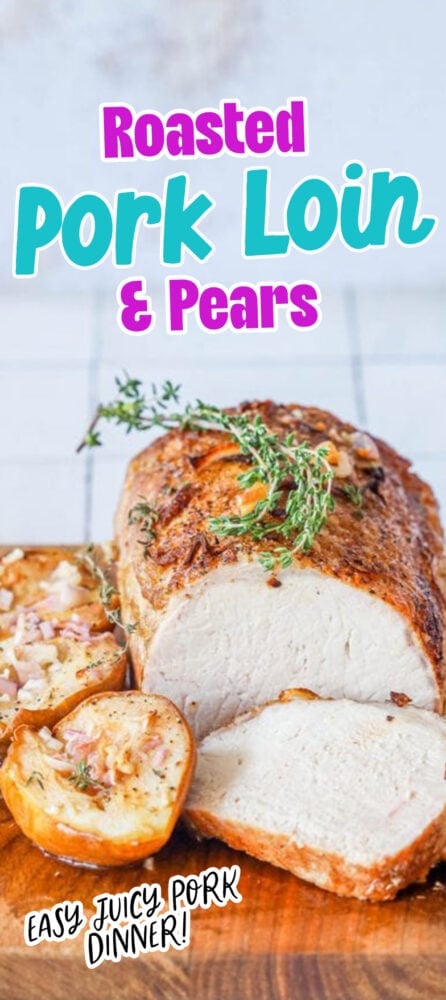
Only have 30 minutes to get dinner on the table? Sign up for my 30 minute dinner plans direct to your inbox!
Find and shop my favorite products in my Amazon storefront here!
Roasted Pork Loin and Pears

Equipment
Ingredients
Instructions
- Marinate pork in Italian dressing, at least 30 minutes, preferably overnight.
- Preheat oven to 350 degrees Fahrenheit.
- Remove pork from marinade and discard marinade.
- Pat dry and season well with salt and pepper.
- Heat 2 tbsp butter in a large heavy pan.
- Brown pork loin on all sides, about 2 minutes per side.
- When pork loin has browned, add to roasting pan or baking sheet.
- Wash pears well and cut in half, removing the core. Pat dry.
- Arrange around pork loin in pan, and cover with diced shallots.
- Generously season pork and pears with herbs, salt, and pepper.
- Drizzle butter and herbs over pork and pears. Toss pears lightly to coat in herb butter.
- Roast 20-30 minutes, checking temperature after 20 minutes.
- When porks internal temperature reaches 140 degrees, remove from oven and let rest 10 minutes before carving.
- Serve and enjoy!
Nutrition
Nutrition information is automatically calculated, so should only be used as an approximation.

